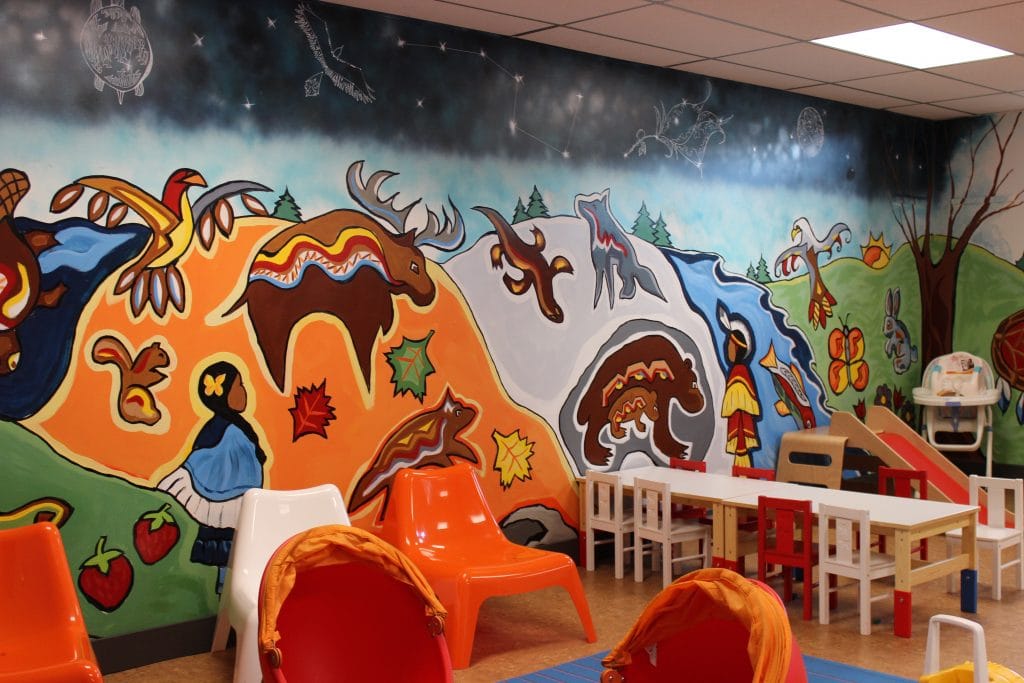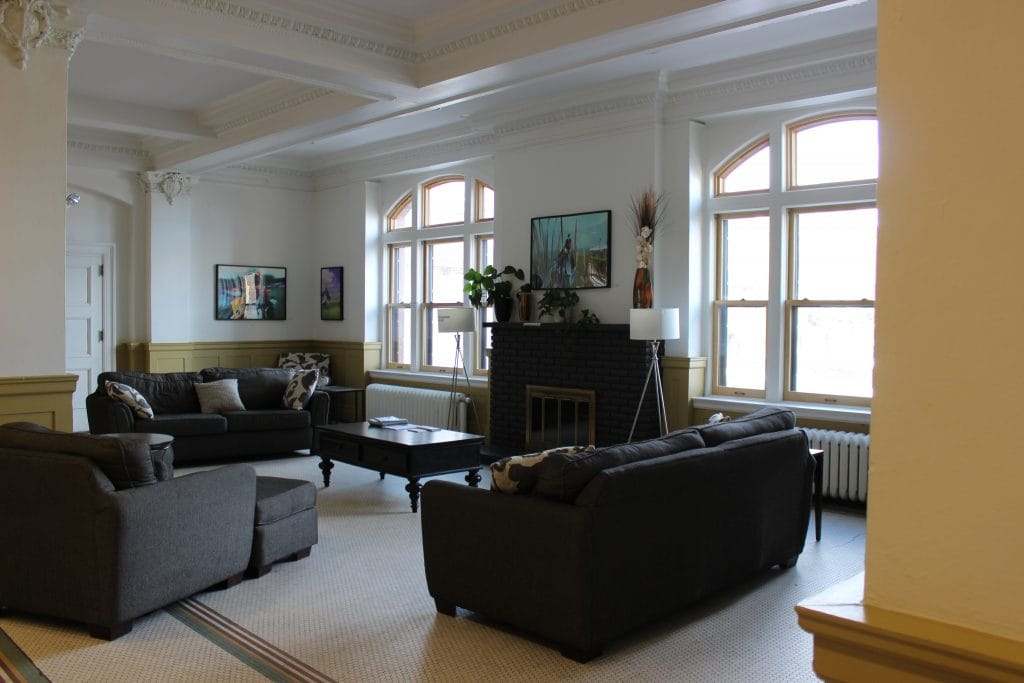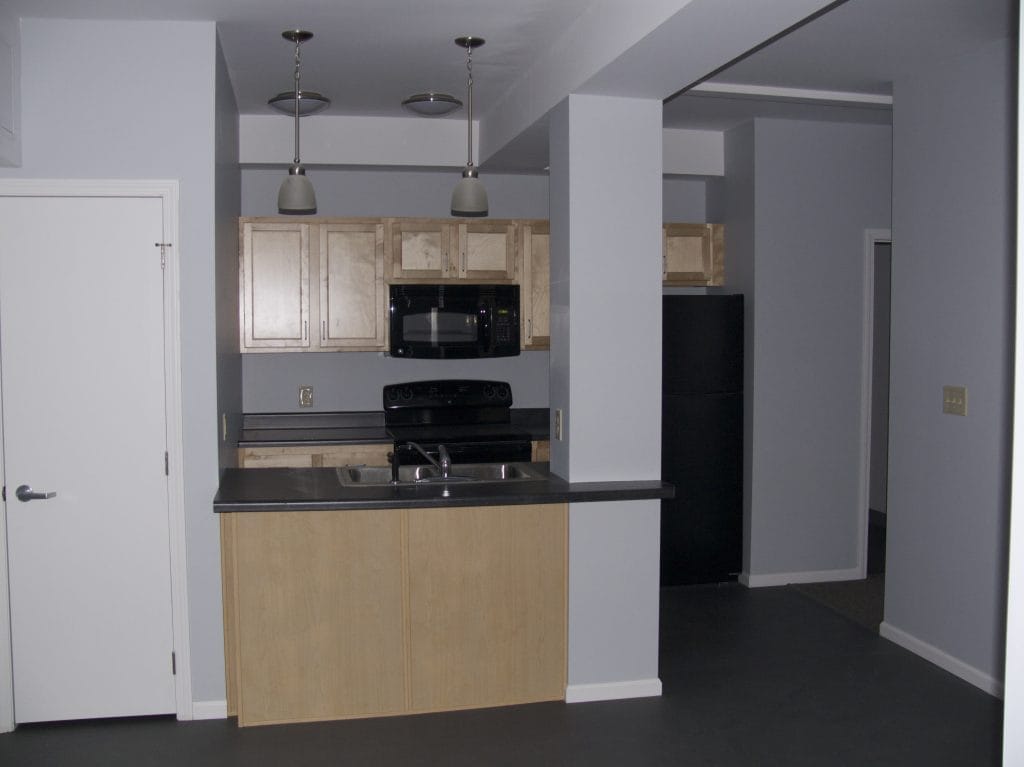“Nothing Short of Magical” – See how AHP funds invigorated affordable housing in Duluth, MN
last updated on Friday, January 13, 2017 in Affordable Housing
Certain spaces hold a sustaining sense of calmness and community that can only be attributed to meticulous planning and attention to every detail. The former YWCA building of Duluth, Minnesota is just such a place that took years and hundreds of dedicated individuals to make a reality. While the final result is a beautiful and transformative living and gathering place, the project's beginning was beset with challenges.
“We almost had no idea what we were getting into at the onset,” says Michelle LeBeau, Development Director for the American Indian Community Housing Organization (AICHO). “We bought the property in 2006, and it took five years to raise the money. That whole time, the process was fraught with barriers.”
The main reason Lebeau says that specific property was picked? Third-party data. “Prior to AICHO purchasing the building, we utilized two separate studies that were done in Duluth by United Way and The Wilder Foundation that helped us decide the direction we should go in.”
Results from the study were staggering. Native Americans comprise just three percent of the total population in Duluth, yet make up 30 percent of the homeless population. “It's a significant problem,” says LeBeau. “And it is a very difficult one to surmount. Duluth is not rent controlled, so it's very hard for people to find affordable, long-term housing.” Those statistics coupled with information gathered from Duluth homeless were enough to seal the decision. “Homeless and at-poverty Native Americans expressed they wanted a living space where community was the main focus, and the former YWCA building is the perfect location for something like that.”
One of those barriers was working with the historic registry of Duluth. AICHO needed to have the site registered, and they needed to complete the required historic renovations. “There are just so many processes you have to follow when you renovate a historic site, because you have to keep the integrity of the building,” says LeBeau.
Once the building was registered and the historic renovations were made, AICHO worked with several other funding and resource agencies, including several Minnesota housing finance agencies, tribal funds and CDBG funding. “Altogether we had 20 separate funding sources, including some private investors and tax credits,” explained LeBeau.
Construction began in 2011 to turn the former YWCA building into rented housing. The top three floors were converted into individual rental units, each with their own kitchen and bathroom. They range from efficiency one bedroom apartments to three bedroom apartments that can accommodate whole families. Twenty units are for low-income families, 17 units for those with special needs, 15 units for homeless and 14 units for individuals recovering from addictions or abuse. Three units have been set aside for visiting families. A five-story elevator tower was added for increased mobility and ease-of-use. But perhaps the most impressive addition was not the living spaces themselves, but the common areas.
“We transformed the former gymnasium and basement level into a huge community space where residents could gather, and it's been nothing short of magical,” says Lebeau. “That space also includes offices for tribal officers to gather and work. It's really a full-service place that the community desperately needed and wanted. The community space is full of vibrant, traditional Native American artwork and plenty of spaces to sit, gather and get to know one's neighbors. But the residents don't just see this as a gathering place – it's a potentially life-changing space."
“The residents that love this space the most are the children,” says Lebeau. “They love to roam the halls, and they often wander to the community area to just sit, do their homework or have a quiet space to themselves. They feel like this whole building is their house, and they are incredibly proud to live here.” Along with several spaces to gather, the building also has a rooftop garden and a large community kitchen. “The local food bank has been providing us with daily breakfasts and dinners two evenings every week, which eases the burden on the occupants since there are no walkable grocery stores in the area.”
Filling the units to capacity was a difficult undertaking, and not for lack of interest. “We didn't even market that the building was going to go up for occupancy, but we did start some word-of-mouth efforts around town in October 2011 that the building would be open in December. Right away, we got 400 applicants.”
Whittling down that list was extremely challenging, because every applicant was a fit for the units. Lebeau explains that AICHO enlisted the help of a local property management company to help approve applicants, and the process took a full six months before the building was at occupancy.
“It's heartbreaking, but it's also the reality of the area,” says Lebeau. “It just shows how desperately we are in need of more affordable housing options."
By the time Lebeau contacted the Federal Home Loan Bank of Des Moines, the project was nearly completed and required additional enhancements. “I had worked with [the Bank] on projects before, and the whole team is very communicative and responsive to our needs. This was a huge project that required a lot of moving parts to make it happen, and the Affordable Housing Program (AHP) grant money helped make some important final revisions possible.”
The AHP subsidy award funded 29 total units at $17,241 per unit, or $500,000 overall.

This painted mural adorns the wall of the main children's area, where little ones can come read, play and share snacks together.

The refurbished main lobby serves as a community gathering area and relaxing spot for residents.

A full-access kitchen in one of the newly refurbished rental units.
TAGS
- Affordable Housing Program
- Community Investment Programs
- Native Programs